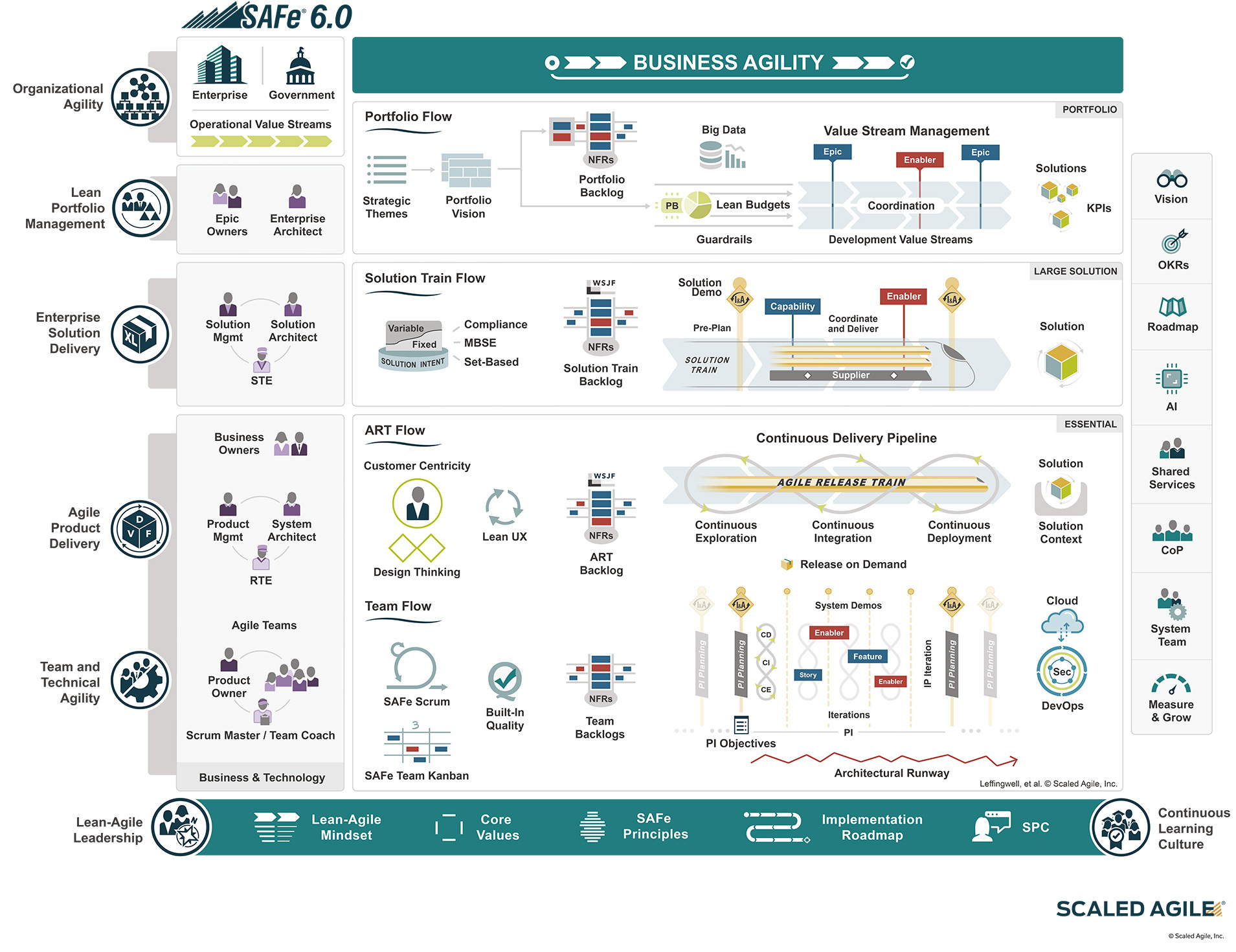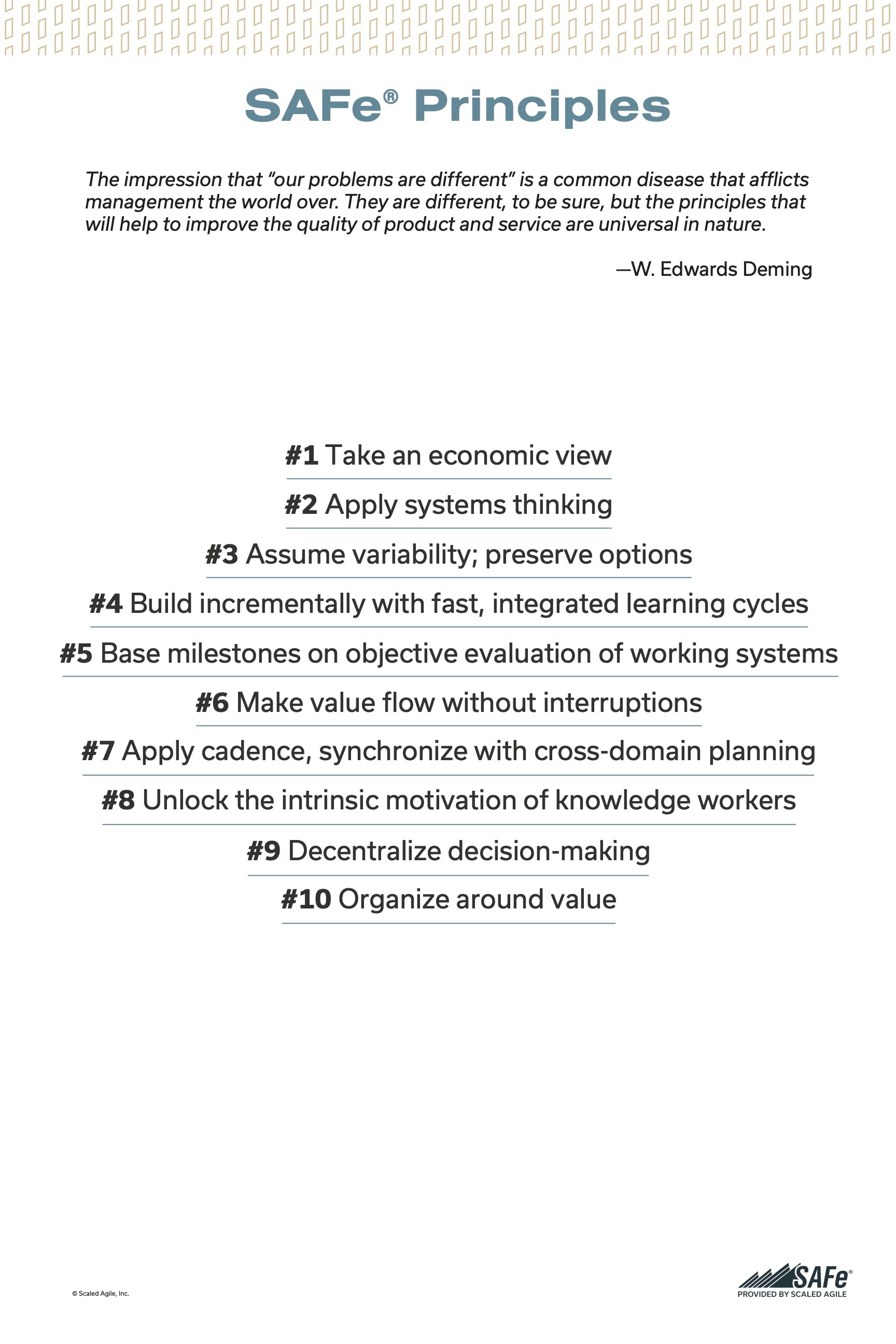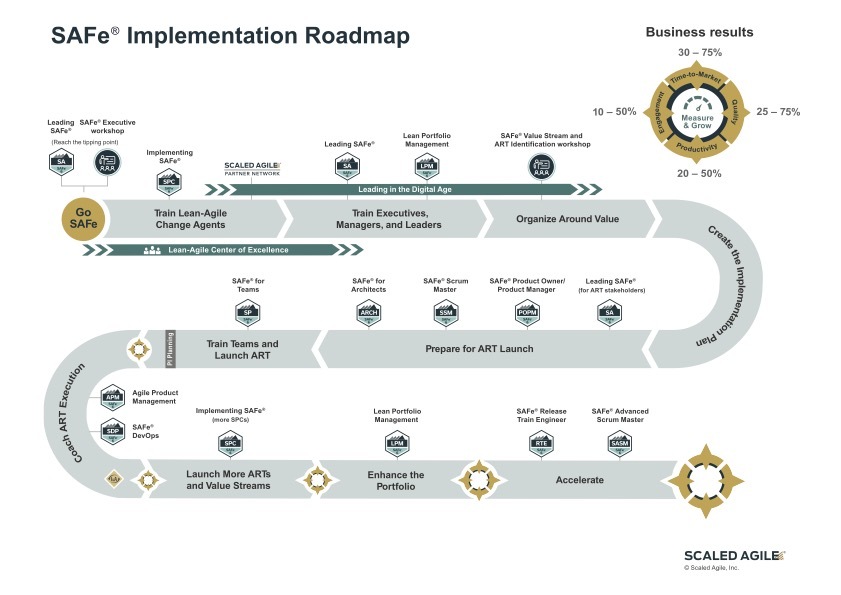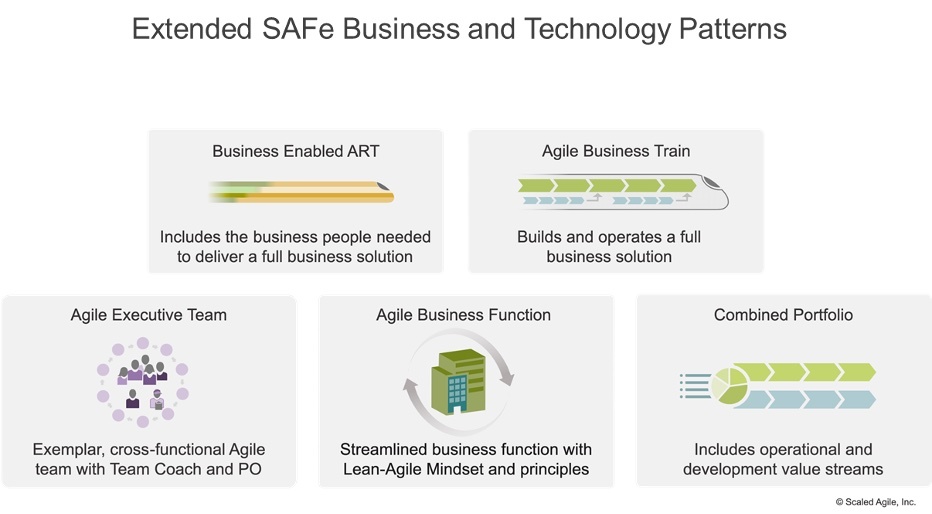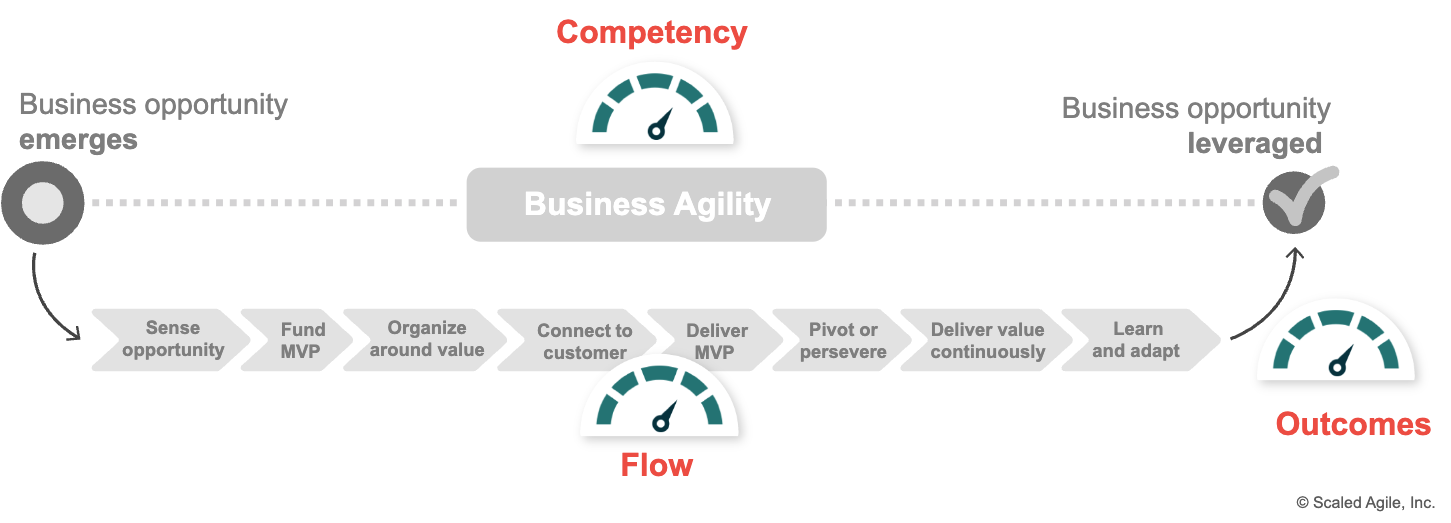Based on the past updates done to SAFe, they will be available for about 1 year. But don't take it for granted and stay tunned for more info. Whenever it changes we will update you asap.
There are 2 new core values added: people & culture and relentless improvement. There are no people without organizations and vice versa. Second, relentless improvement. The mindset and ability as a team and as a team of teams to stay in the flow.
SAFe Principles – Principle #6 was changed and is now aligned with the five principles of Lean Thinking. It also highlights the eight common properties of a flow-based system and provides specific accelerators for eliminating impediments to flow. In addition, Principles #6 and #8 were refactored to our updated thinking, and Principle #9 was refined to describe better when and how decisions should be decentralized.

